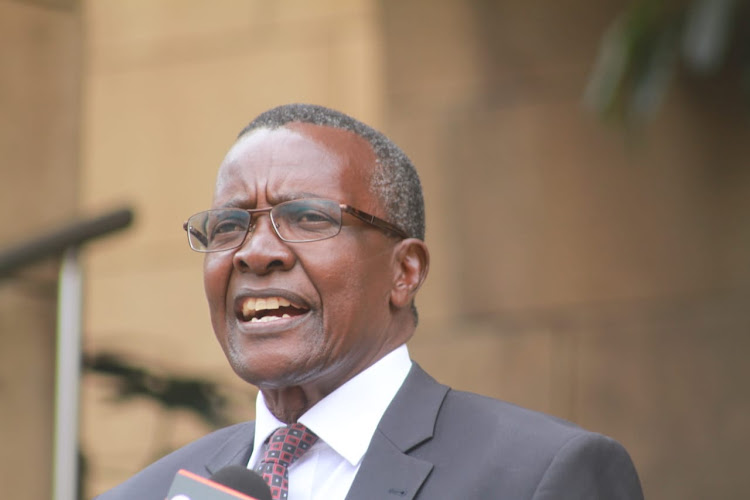Building stronger climate resilient communities

As the impacts of climate change continue to disproportionately affect vulnerable groups, women, youth, and minorities are emerging as essential agents in driving climate adaptation efforts.
This was revealed during a meeting whose theme was to discuss the role of gender equality, youth, and inclusivity in advancing system transformation amid climate challenges.
The reason is women and youth, are often at the frontlines of climate impacts, yet they bring unique experiences and perspectives that can shape innovative solutions.
“These groups are not merely victims of climate change but key players in building resilience,” said Ifeoluwa Olatayo a Climate Policy Advisor and a Ban Ki-moon Centre for Global Citizens’Youth AgriChampion.
Barriers
However, barriers such as limited access to resources, land, and decision-making power often prevent them from fully contributing to climate adaptation efforts. Studies have shown that women farmers in developing countries are less likely to access modern agricultural technologies, even though they make up a significant portion of the agricultural workforce. Similarly, youth, brimming with ideas and energy, often lack the financial and institutional support needed to implement their solutions.
“This is why young farmers and women across African countries are demanding greater say in the decisions that affect them, particularly in adapting to a changing climate. While they continue to innovate, develop and implement solutions, scaling these solutions rely on a strong policy environment that not only engages and empowers them but also invests in their solutions,” she says.
According to her, governments and organizations must invest in education, capacity building, and access to climate finance to enable these groups to thrive. By doing so, the world can unlock the full potential of women and youth as drivers of change, ensuring a fairer, more effective response to the climate crisis.
Innovations not reaching market
Speaking at the same event, Hajar Kouryani, Coordinator of Women in Agriculture IAAS World said that young people in Africa’s agricultural sector continue to innovate and develop solutions for agricultural adaptation yet these innovations fail to reach the market due to limited funding, inadequate support structures, and the absence of platforms to scale their ideas.
On the other hand, women possess traditional knowledge that is invaluable for climate adaptation, and integrating their perspectives into the development of plans and programs can lead to more robust and impactful outcomes.
“When women’s traditional knowledge and the innovative ideas of youth are combined, we can create holistic solutions that address agricultural productivity while also building resilience and promoting sustainability,” said Kouryani.
Climate finance
According to Derenoncourt Marie Ena from the Alliance of Bioversity-CIAT, lack of access to finance remains a major barrier for women and youth in agriculture and that is why climate finance actors must prioritize gender and youth outcomes by designing financial instruments with clear targets and strategies to enhance financial flows directly benefiting these groups.
Additionally, simplifying access to climate finance and ensuring greater transparency in its allocation, utilization, and monitoring are crucial to effectively supporting women and youth in adapting to climate challenges. At the same time, women and youth must be equipped with the knowledge and capacity to meet the criteria required to access these funds.
“We are calling upon governments to ensure that youth, women, and minorities benefit from the $300 billion in new climate finance pledged in Baku. For them to benefit, there is need for inclusive policies and transparent mechanisms to allocate these funds effectively. By doing so, we can empower these groups to lead adaptation efforts and create resilient agricultural systems that address the unique challenges posed by climate change,” said Ena.
Poor access
According to Kouryani, with only six years remaining to achieve the Sustainable Development Goals (SDGs), there is an urgent need to amplify the inclusion of women, youth, and minorities in climate action strategies. The reason is the climate crisis, conflicts, and economic challenges are driving a reversal in the progress made previously.
Support for smallholder farmers is also more important than ever to turn the tide and achieve zero hunger. About a third of global food is currently produced by 500 million smallholder farming households yet they neither have sufficient capacity to cope with a changing climate nor a voice in the decisions and policies that most affect them.
“Rising hunger and food insecurity are clear indications that global agricultural systems are failing to provide food and nutrition or generate sustainable incomes. There is an urgent need to develop more inclusive, bottom-up adaptation strategies that account for local needs and realities,” says Kouryani.
Young farmers also face poor access to international climate finance due to stringent bureaucratic requirements according to Olatayo. International climate finance programs often have strict eligibility criteria and reporting requirements that can be difficult for smallholder farmers to meet.
Long process
Grant applications can extend for several pages and must be completed in English, accompanied by a long list of requirements. Most smallholder farmers, who are in dire need of these funds, often lack the capacity to complete these forms and do not meet many of the necessary criteria.
Typically, grant applications require documents such as bank statements, audited financial reports, business plans, business registration documents, and financial models. These demands are unrealistic for smallholder farmers to meet.
This barrier prevents many deserving farmers from accessing the funding they critically need to improve their farming practices and livelihoods. Private sector funding is equally challenging for smallholder farmers with banks and investors charging high interest rates or expecting high returns.
“To make climate finance accessible by all gender, funding application forms should be redesigned to be user-friendly for smallholder farmers, reducing the number of required documents, and providing clear guidelines and examples,” says Olatayo.















